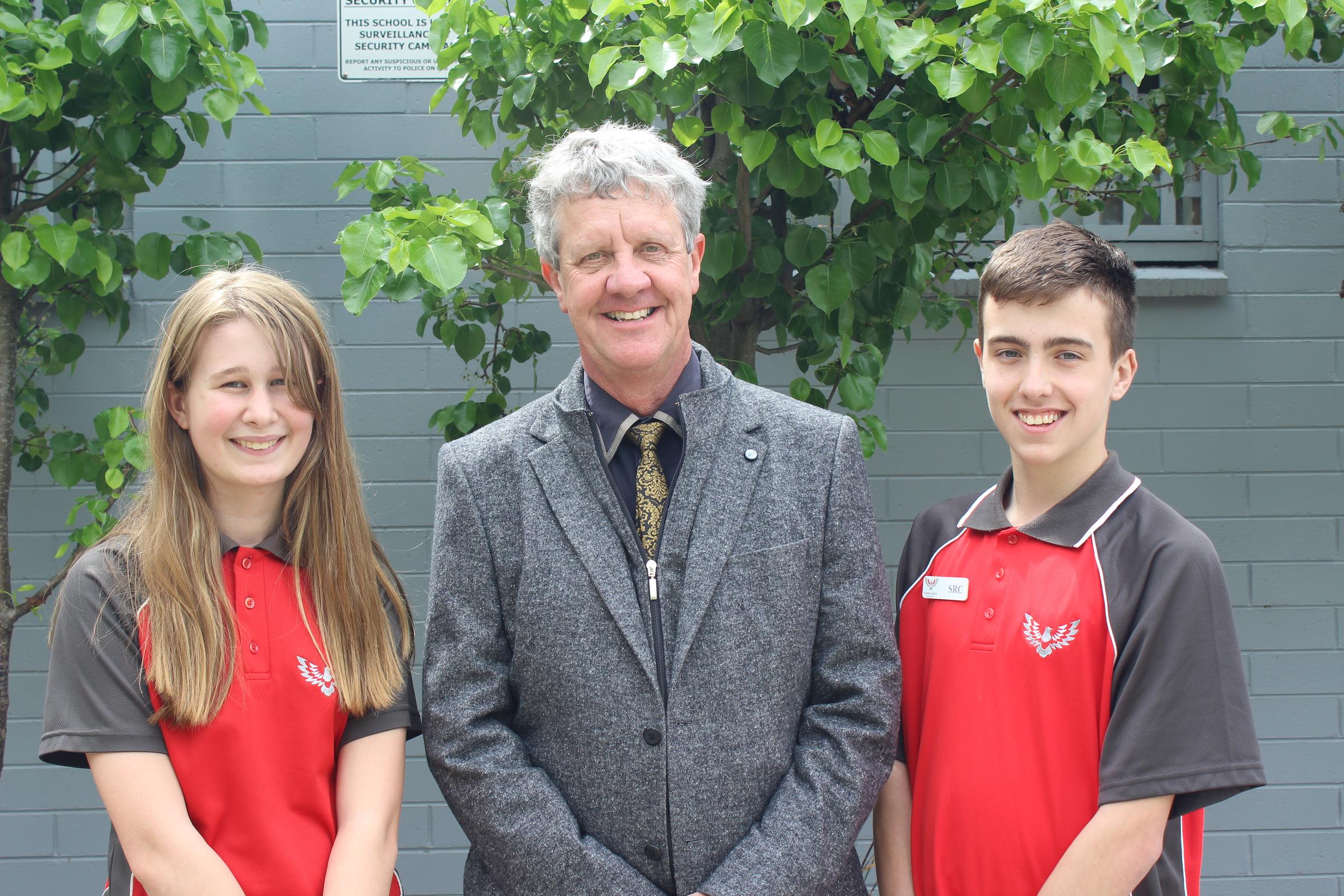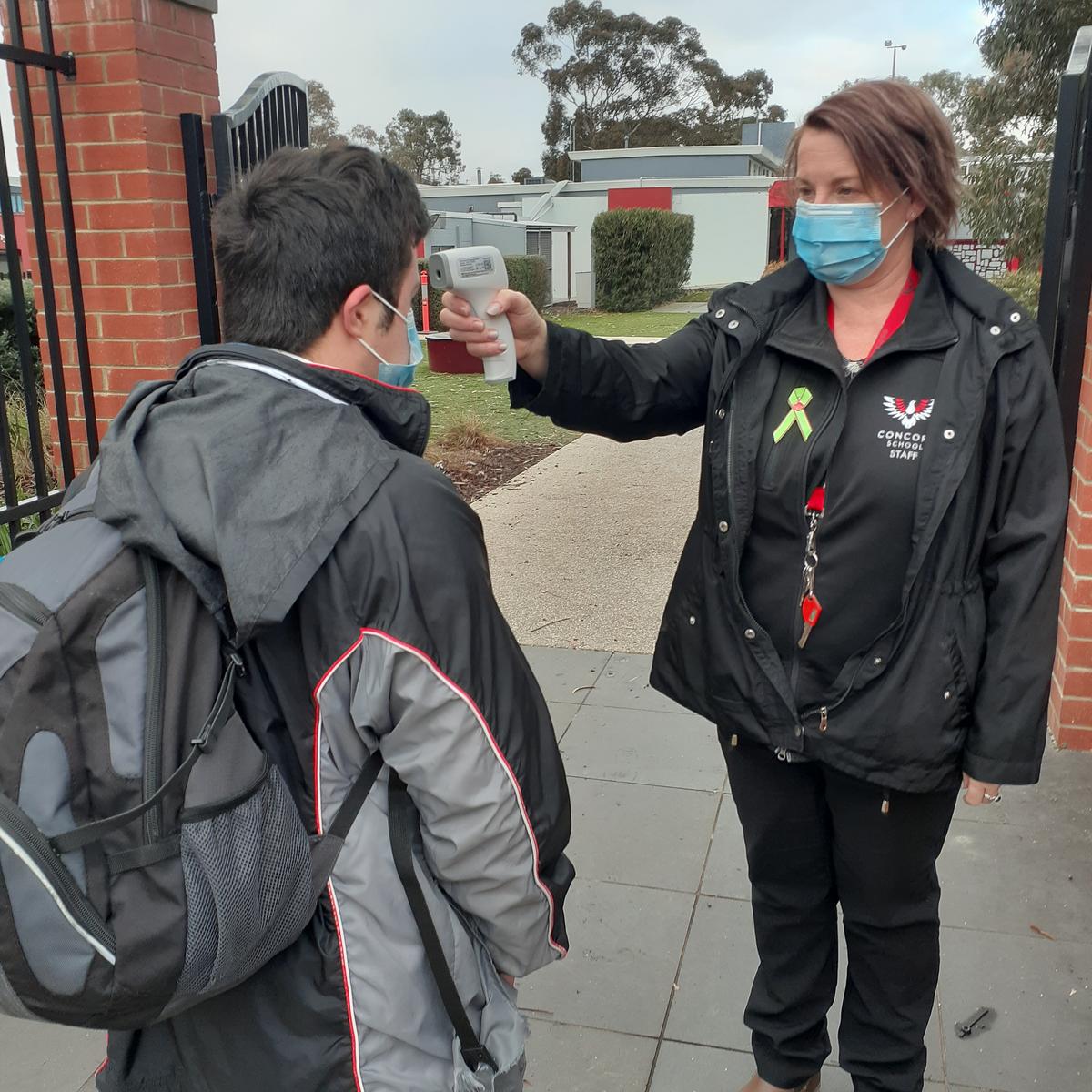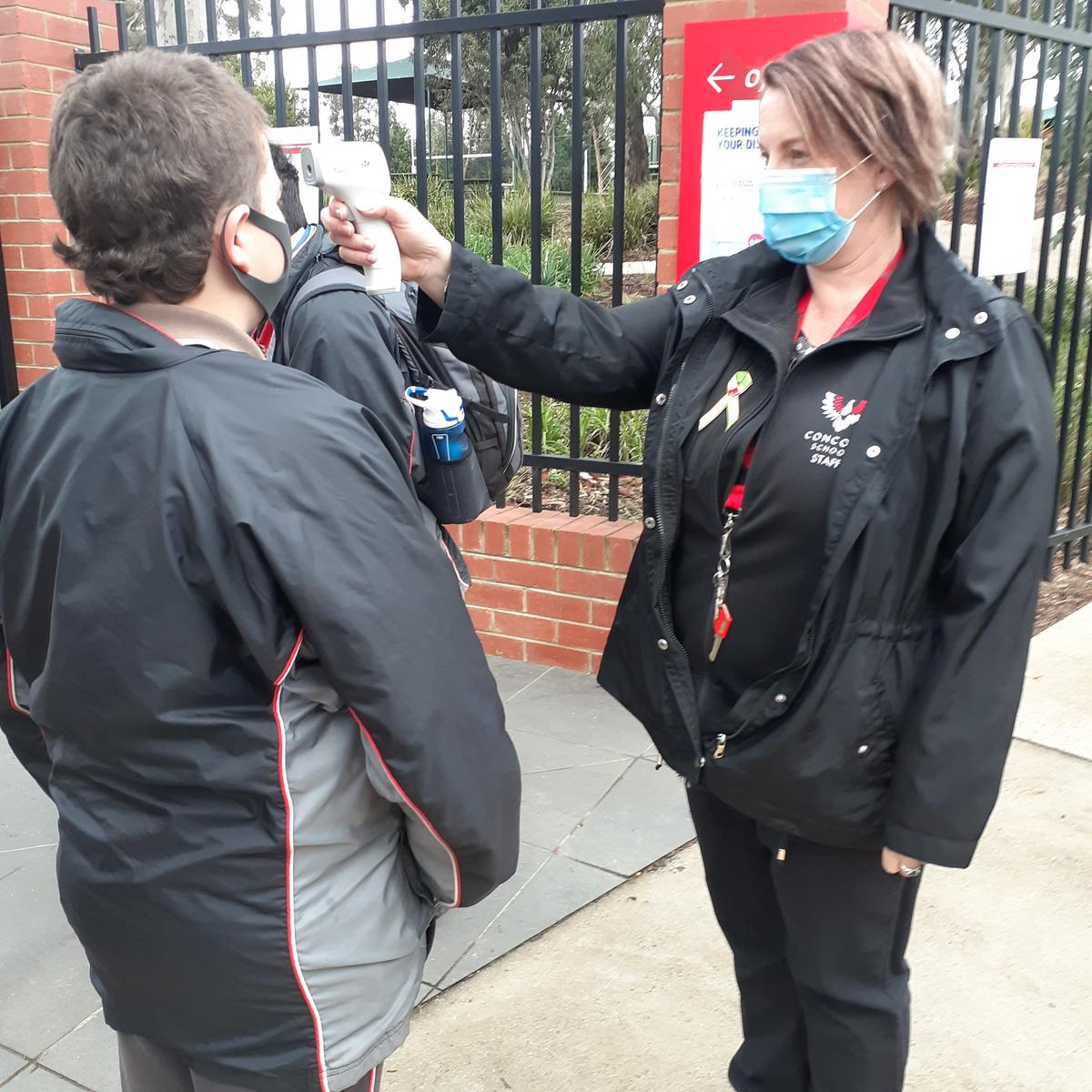Acting Principal's Report

Term 3
This term so far has been very challenging and often stressful for students, families, staff and the community. Be reassured we are doing everything that the Department of Education & Training recommends but please also be aware that because of the rapidly changing nature of this pandemic, sometimes we are given very short notice about health and safety requirements.
Health warning
Please ensure if your child is unwell or anyone in your family has any of the symptoms of coronavirus (COVID-19), however mild, they must stay at home, seek advice and get tested. These symptoms include fever, chills or sweats, a cough, a sore throat, shortness of breath or a runny nose, or loss of sense of smell or taste.
If you’re concerned yourself or a family member may have contracted the virus or need more information, please call the 24-hour coronavirus hotline on 1800 675 398.
Face Coverings
In line with advice from the Victorian Chief Health Officer and the directive from the DET, all school-based staff at Concord School are now wearing face coverings at school.
Teachers and education support staff are not required to wear face coverings while teaching but those who wish to do so, can. Staff wear face coverings in other areas of the school. e.g. in the staff room, on yard duty and when providing first aid or taking temperatures.
Dyson’s bus supervisors and drivers wear face coverings .
Students at Concord School are not required to wear a face covering. However we will actively support any student who wishes to a wear one.
Parents/carers will be required to wear face coverings whenever they leave the house, including for school drop off and pick up.
The Department of Education anticipates that most staff and students will supply their own face coverings, but we expect to receive a supply of single-use face masks to provide to students if they are unable to access one themselves.
Safe schools
Concord School is a member of the Safe Schools Coalition of Australia. As a school community, we are committed to ensuring our education environment is a safe place for all students, including lesbian, gay, bisexual, transgender and intersex (LGBTI) students, and are free of discrimination. This commitment is intrinsically tied to our child safety focus and zero tolerance for all forms of child abuse, including psychological abuse. https://www.education.vic.gov.au/about/programs/Pages/safeschools.aspx”
Below are the facts about Safe Schools.
Myth: The Safe Schools program is a compulsory part of the school curriculum.
Fact: Safe Schools is not part of the Victorian Curriculum – it’s a commitment that schools make to be inclusive places for all students, including LGBTI students. The Department of Education and Training provides information, resources and professional learning that have been developed by experts for school staff to use as they see fit to prevent discrimination against LGBTI students.
Myth: The Safe Schools program is teaching sex education and/or sexual practices to students, including material that is not age-appropriate.
Fact: Safe Schools is not a sex education program, nor does it teach sexual practices. The Safe Schools program simply seeks to create safe and inclusive environments for LGBTI students. Resources provided by the Department of Education and Training to help deliver the program are developed by experts and carefully selected to ensure they are appropriate for the ages of students using them.
Myth: The Safe Schools program encourages students to question or change their gender or sexuality.
Fact: Nothing about the Safe Schools program encourages students to question or change their gender or sexuality.
Myth: The Safe Schools program teaches radical gender theory.
Fact: Safe Schools does not teach radical gender theory. It is simply a program to help schools and students understand and respect that people should not be discriminated against for any reason - including gender and sexual diversity.
Myth: The Safe Schools program teaches there are 63 different genders.
Fact: The Safe Schools program does not teach this.
Myth: The Safe Schools program encourages use of props.
Fact: The Department of Education and Training provides evidence-based information, written resources and professional learning for school staff to use as they see fit to support schools to prevent, and respond to, discrimination against LGBTI students. These resources do not include props.
Myth: The Safe Schools program asks students to role play same-sex relationships.
Fact: There are no role playing or acting exercises in the optional Safe Schools teaching resources. Rather, one interactive exercise invites students to imagine themselves in someone else’s shoes. This exercise is designed to build empathy and understanding of others. Resources provided by the Department of Education and Training are developed by experts and carefully selected to ensure they are age appropriate.
Myth: The Safe Schools program isn’t a real anti-bullying program.
Fact: It is a sad reality that LGBTI young people are more likely to be bullied at school than elsewhere and this has a major impact on their educational outcomes. Safe Schools provides information and resources to schools to raise understanding and awareness of sexual and gender diversity. The program assists schools to have conversations with students about mutual respect and understanding towards each other despite differences in their culture, beliefs, sexuality or gender. By doing so, young people feel safer at school and are provided with an environment where they can be happy, confident and resilient.
Myth: All government and non-government schools are forced to join the program.
Fact: Schools are free to implement the program in a way that best suits their students and community. Other schools, including primary schools and non-government schools, are able to access the Safe Schools information and resources as they see fit and request support where they need it.
Myth: Parents are not given an opportunity to consent to their child’s participation and the program disregards the wishes of parents who do not want their children to participate.
Fact: Individual schools decide how to implement the Safe Schools program at their school, based on their local context and the needs of their school community. This is often done in consultation with students, school council and the broader school community. The program does not impose specific requirements for student participation but does ask all school community members to demonstrate the school’s values. The Department of Education and Training encourages parents to discuss any concerns directly with the school principal. Within any school community there is always a diversity of views represented and schools take those views into account when working with children and families.
Myth: Students are told not to discuss the content of the Safe Schools program with people outside of school, including their parents.
Fact: This is not true. Students are encouraged to discuss what they learn at school with their families and parents. Schools are encouraged to engage families and the broader school community in their implementation of the Safe Schools program.
Myth: The program promotes and teaches children to undertake behaviour such as chest-binding and cross-dressing.
Fact: The program does not promote chest-binding or cross-dressing. The program provides information and resources to schools to raise understanding and awareness of sexual and gender diversity. Many LGBTI students feel uncomfortable about seeking support or affirming their identity and providing guidance and advice about these processes can reduce fear and anxiety in dealing with this. For many people, the question of their gender or their sexuality is straightforward; however, for some it is more contested as they don’t fit neatly into the ‘norm’. The Safe Schools program is solely aimed at helping children and young people understand that not everyone is the same and to respect this.
Myth: The Safe Schools program promotes cross dressing.
Fact: The Safe Schools program does not promote cross-dressing. The Safe Schools program seeks to ensure all children and young people feel safe, happy and comfortable at school.
Myth: Schools are overstepping their role by participating in the Safe Schools program.
Fact: Making sure our school environments are safe and free from discrimination and harassment is a requirement under Australian and Victorian anti-discrimination laws. The role of a school is to equip its students to lead healthy and productive lives, to not only achieve academically but also to be happy, healthy and resilient. Social and emotional learning is a key aspect of development for young people.
Myth: Respectful Relationships and the Safe Schools program are the same.
Fact: Respectful Relationships and Safe Schools are two very different initiatives. The Victorian Royal Commission into Family Violence recommended Respectful Relationships be introduced to all government schools (Recommendation 189). The Respectful Relationships initiative takes a whole of school approach, looking at practices and policies to build a culture of respect and equality. It also looks at topics like coping with stress and problem solving, helping students excel at school.
Principal Award- Lachlan Susanof
Lachlan’s maturity towards his learning has shone this year. During remote and flexible learning he completed all set tasks to his usual high standard, ensuring he continued to show his personal best. Within the class he is respectful and responsible. Helping others learn when he can. Lachlan asks questions, takes on feedback to improve his work and continues to strive towards succeeding in his learning goals. An outstanding effort Lachlan.
We are all so proud, great job Lachlan.
Acting Principal
Colin Simpson




